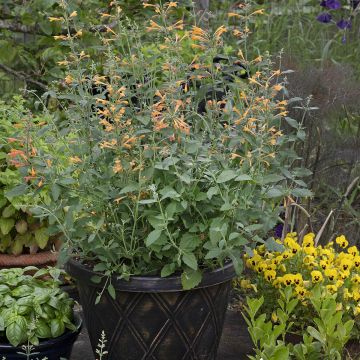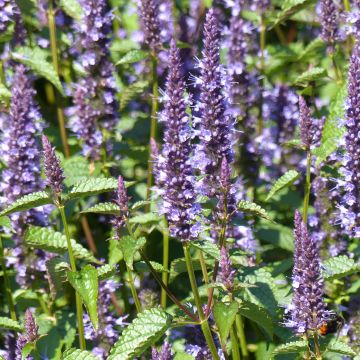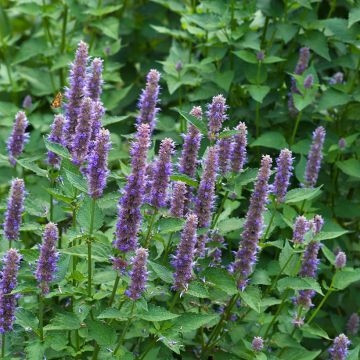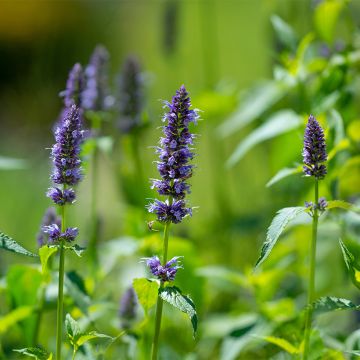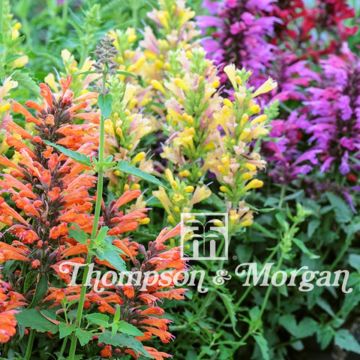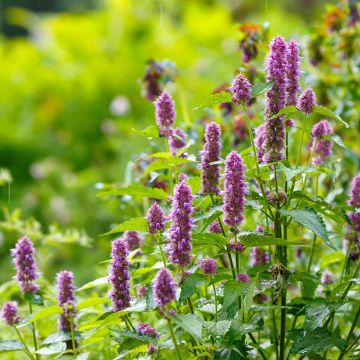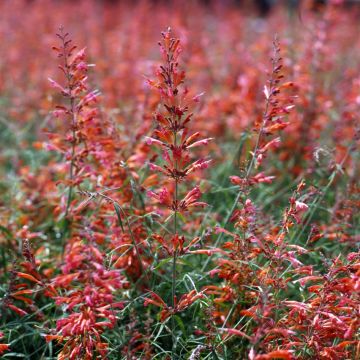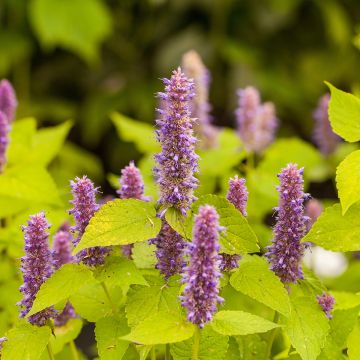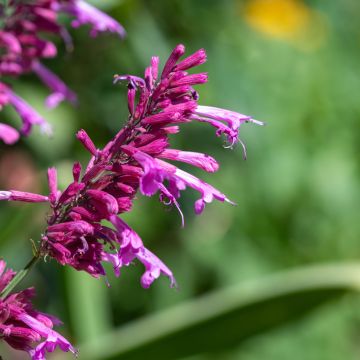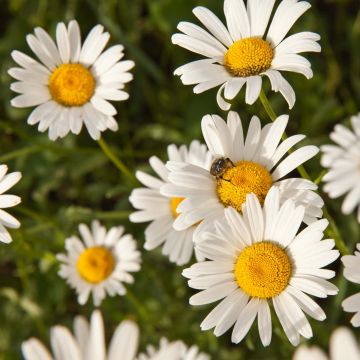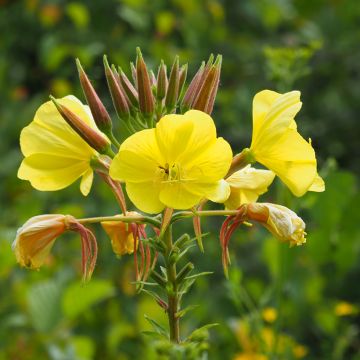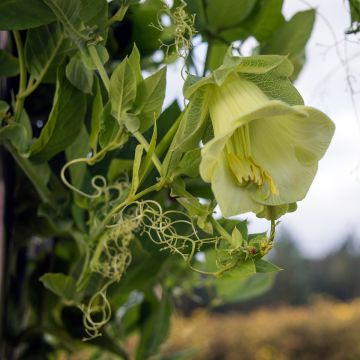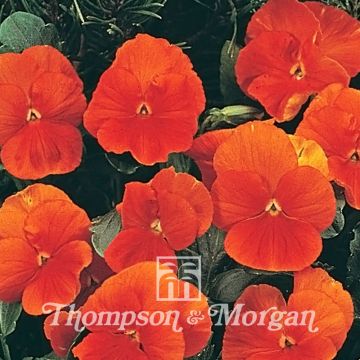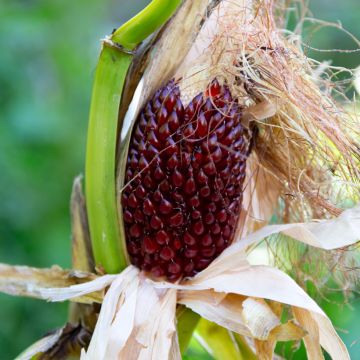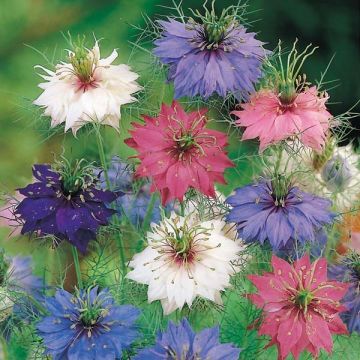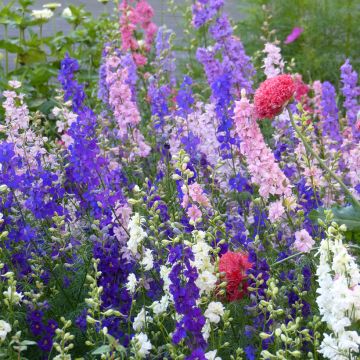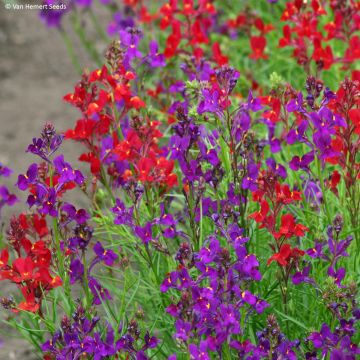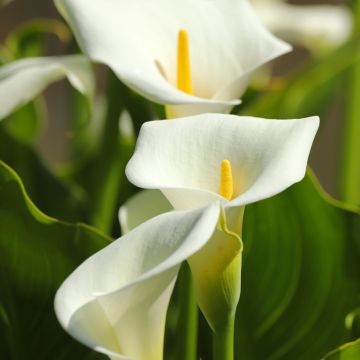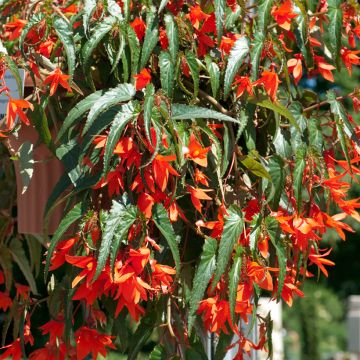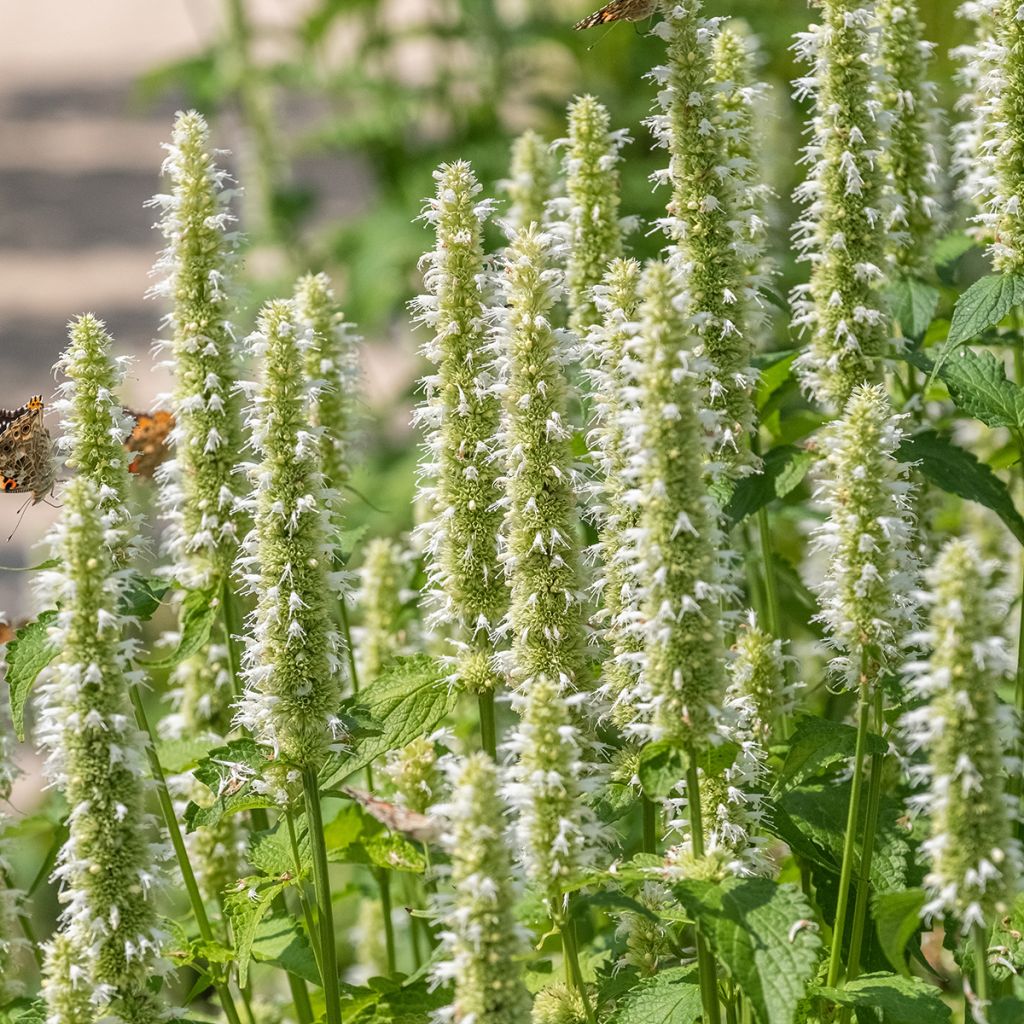

Agastache rugosa f. albiflora Alabaster seeds - Korean mint
Agastache rugosa f. albiflora Alabaster seeds - Korean mint
Agastache rugosa Alabaster
Korean Mint, Anise Hyssop
This item cannot be shipped to the selected country
Dispatch by letter from €3.90
More information
Schedule delivery date,
and select date in basket
This plant carries a 6 months recovery warranty
More information
We guarantee the quality of our plants for a full growing cycle, and will replace at our expense any plant that fails to recover under normal climatic and planting conditions.
Seed-only orders are dispatched by sealed envelope. The delivery charge for seed-only orders is €3.90.
Does this plant fit my garden?
Set up your Plantfit profile →
Description
Agastache rugosa f. albiflora 'Alabaster' is a short-lived perennial plant that produces pleasantly scented mint foliage. In summer, it is covered with beautiful spikes filled with tiny, highly nectar-rich flowers that are green at first, then white and tinged with bronze. This highly decorative plant blooms in large clumps for months if spent flowers are removed. It is perfect for slightly wild areas of the garden or as a culinary plant. It thrives in full sun, fertile, and well-drained soil.
Agastache rugosa is a plant from the lamiaceae family, native to North America and growing in dry meadows. The plant is not as hardy as European mints. Although perennial, it needs to be propagated every year or at least every 3 years. In nature as well as in the garden, Agastache easily hybridises with other species and self-seeds abundantly. 80cm tall and 30cm wide, 'Alabaster' has an upright habit and herbaceous tuft. Its angular stems are adorned with leaves which are dark green on the upper side and lighter on the underside, triangular and elongated, with roughly toothed edges, 8cm long and hairy. They give off an aroma that strongly resembles mint. It is mainly cultivated for the beauty of its long floral spikes that appear during summer, from July to October. The small tubular two-lipped flowers are grouped in thin and very dense terminal spikes. It is a good nectariferous plant.
As a perennial plant that thrives in poor soil, Agastache is a wonder of simplicity with a wild appearance. It loves the sun and porous soils. It is easy to grow and can be cultivated in rock gardens or gravel gardens. In hot regions, it should not lack water at the beginning of flowering. It structures natural or country-style flower beds, composed of nepetas, stipas, echinaceas, gauras, yarrows, and fountain grasses. In the vegetable garden, it pairs well with thyme, savory, chervil, or basil. The dried flowers can be preserved for bouquets. The leaves are traditionally used in cooking as a substitute for mint, or in herbal teas after drying.
Report an error about the product description
Flowering
Foliage
Plant habit
Botanical data
Agastache
rugosa
Alabaster
Lamiaceae
Korean Mint, Anise Hyssop
Lophanthus rugosus Alabaster
Cultivar or hybrid
Other Agastache seeds
Planting and care
Sow from February to April at 15-20°C in good quality soil and cover with a fine layer of compost or vermiculite. Keep the soil moist but not soggy and make sure to give the seeds enough light to germinate. To speed up the process, place in a propagator or place the seed tray inside a polythene bag until germination (30-90 days).
When the plants are strong enough to handle, transplant them into pots and move them to a cooler place until they are ready to take outdoors. When all risk of frost is over, harden them off for 7 to 10 days then plant them out in a sunny location with fertile, well-drained soil. Make sure to leave about 60 cm between each plant.
Sowing period
Intended location
This item has not been reviewed yet - be the first to leave a review about it.
Flower seeds
Haven't found what you were looking for?
Hardiness is the lowest winter temperature a plant can endure without suffering serious damage or even dying. However, hardiness is affected by location (a sheltered area, such as a patio), protection (winter cover) and soil type (hardiness is improved by well-drained soil).

Photo Sharing Terms & Conditions
In order to encourage gardeners to interact and share their experiences, Promesse de fleurs offers various media enabling content to be uploaded onto its Site - in particular via the ‘Photo sharing’ module.
The User agrees to refrain from:
- Posting any content that is illegal, prejudicial, insulting, racist, inciteful to hatred, revisionist, contrary to public decency, that infringes on privacy or on the privacy rights of third parties, in particular the publicity rights of persons and goods, intellectual property rights, or the right to privacy.
- Submitting content on behalf of a third party;
- Impersonate the identity of a third party and/or publish any personal information about a third party;
In general, the User undertakes to refrain from any unethical behaviour.
All Content (in particular text, comments, files, images, photos, videos, creative works, etc.), which may be subject to property or intellectual property rights, image or other private rights, shall remain the property of the User, subject to the limited rights granted by the terms of the licence granted by Promesse de fleurs as stated below. Users are at liberty to publish or not to publish such Content on the Site, notably via the ‘Photo Sharing’ facility, and accept that this Content shall be made public and freely accessible, notably on the Internet.
Users further acknowledge, undertake to have ,and guarantee that they hold all necessary rights and permissions to publish such material on the Site, in particular with regard to the legislation in force pertaining to any privacy, property, intellectual property, image, or contractual rights, or rights of any other nature. By publishing such Content on the Site, Users acknowledge accepting full liability as publishers of the Content within the meaning of the law, and grant Promesse de fleurs, free of charge, an inclusive, worldwide licence for the said Content for the entire duration of its publication, including all reproduction, representation, up/downloading, displaying, performing, transmission, and storage rights.
Users also grant permission for their name to be linked to the Content and accept that this link may not always be made available.
By engaging in posting material, Users consent to their Content becoming automatically accessible on the Internet, in particular on other sites and/or blogs and/or web pages of the Promesse de fleurs site, including in particular social pages and the Promesse de fleurs catalogue.
Users may secure the removal of entrusted content free of charge by issuing a simple request via our contact form.
The flowering period indicated on our website applies to countries and regions located in USDA zone 8 (France, the United Kingdom, Ireland, the Netherlands, etc.)
It will vary according to where you live:
- In zones 9 to 10 (Italy, Spain, Greece, etc.), flowering will occur about 2 to 4 weeks earlier.
- In zones 6 to 7 (Germany, Poland, Slovenia, and lower mountainous regions), flowering will be delayed by 2 to 3 weeks.
- In zone 5 (Central Europe, Scandinavia), blooming will be delayed by 3 to 5 weeks.
In temperate climates, pruning of spring-flowering shrubs (forsythia, spireas, etc.) should be done just after flowering.
Pruning of summer-flowering shrubs (Indian Lilac, Perovskia, etc.) can be done in winter or spring.
In cold regions as well as with frost-sensitive plants, avoid pruning too early when severe frosts may still occur.
The planting period indicated on our website applies to countries and regions located in USDA zone 8 (France, United Kingdom, Ireland, Netherlands).
It will vary according to where you live:
- In Mediterranean zones (Marseille, Madrid, Milan, etc.), autumn and winter are the best planting periods.
- In continental zones (Strasbourg, Munich, Vienna, etc.), delay planting by 2 to 3 weeks in spring and bring it forward by 2 to 4 weeks in autumn.
- In mountainous regions (the Alps, Pyrenees, Carpathians, etc.), it is best to plant in late spring (May-June) or late summer (August-September).
The harvesting period indicated on our website applies to countries and regions in USDA zone 8 (France, England, Ireland, the Netherlands).
In colder areas (Scandinavia, Poland, Austria...) fruit and vegetable harvests are likely to be delayed by 3-4 weeks.
In warmer areas (Italy, Spain, Greece, etc.), harvesting will probably take place earlier, depending on weather conditions.
The sowing periods indicated on our website apply to countries and regions within USDA Zone 8 (France, UK, Ireland, Netherlands).
In colder areas (Scandinavia, Poland, Austria...), delay any outdoor sowing by 3-4 weeks, or sow under glass.
In warmer climes (Italy, Spain, Greece, etc.), bring outdoor sowing forward by a few weeks.

































